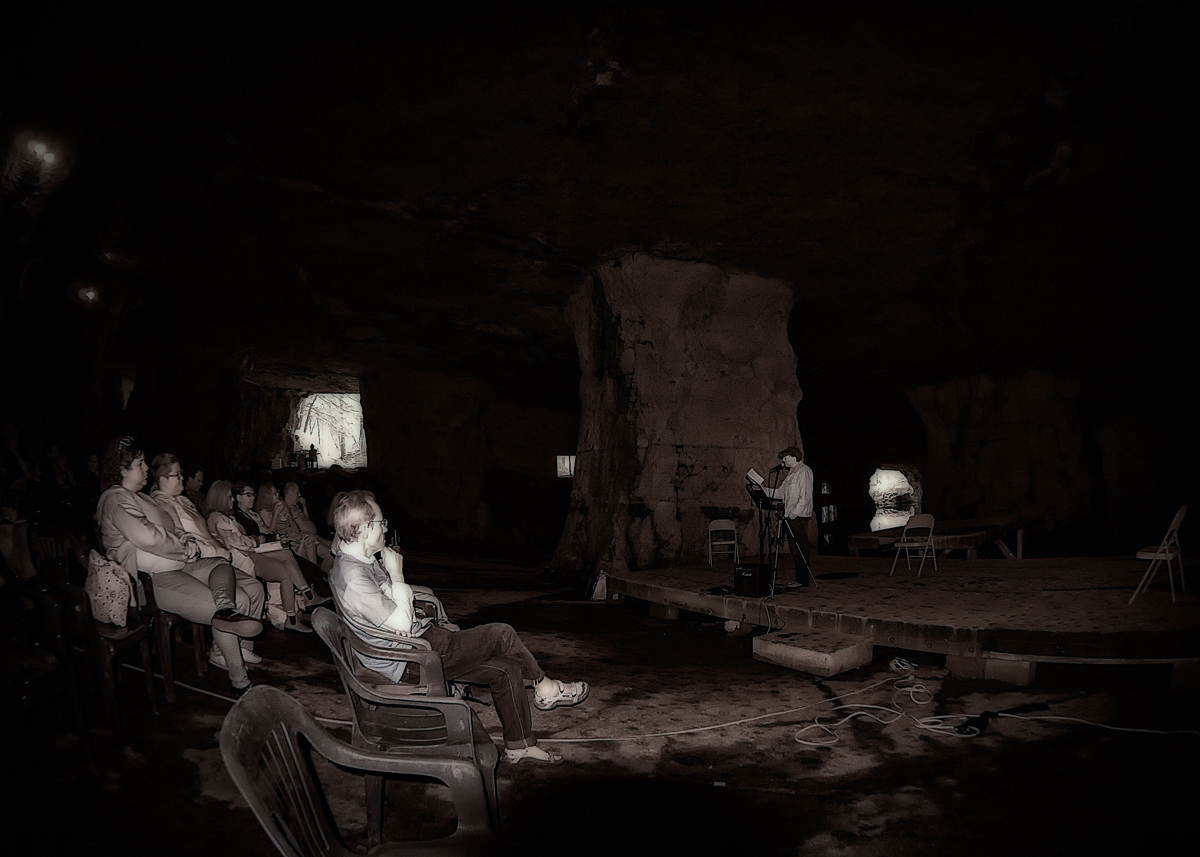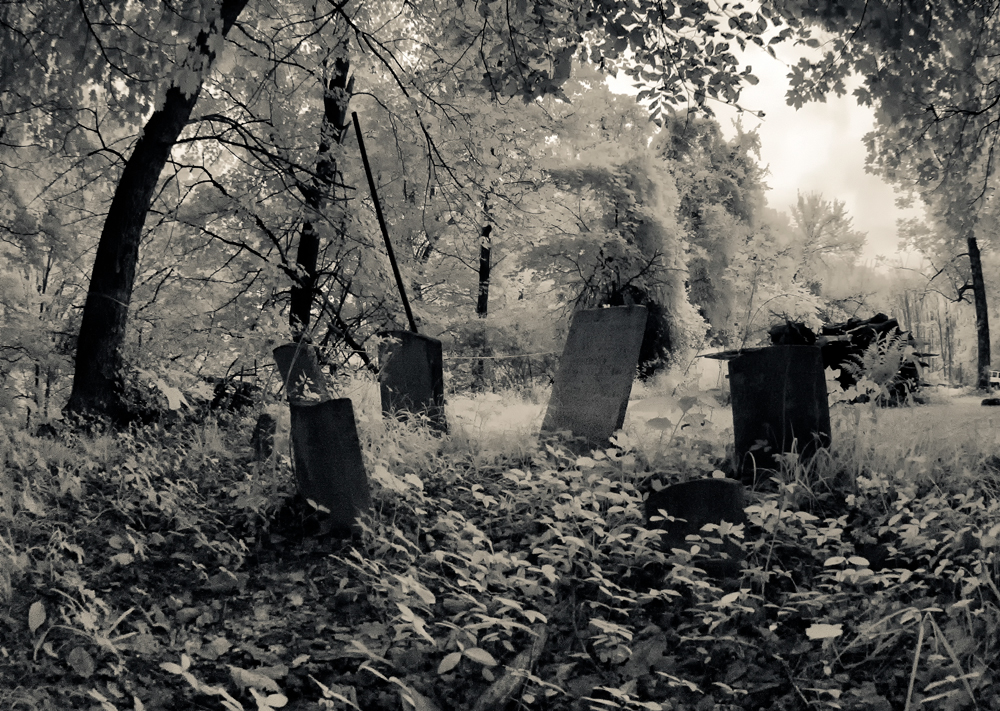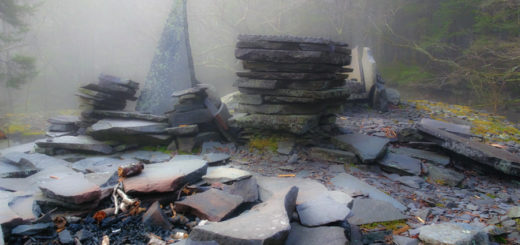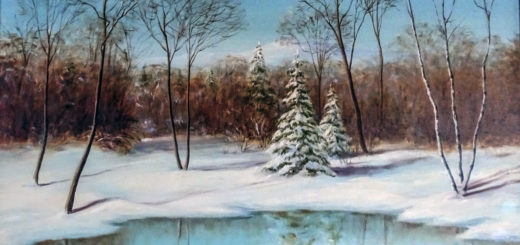The Widow Jane Mine
The Widow Jane Mine. Nobody knows how it got its name. Jane—as well as any connection she might have had with this long-idle natural cement mine in Rosendale, New York—is lost to history. What can be said with certainty is that the mine’s last owner was one Andrew J. Snyder II. By all accounts, he was a man with a passion for cement-making, no matter how unprofitable the business had become by the time he took over the property in 1911, at age twenty-one. He kept trying to make a go of the business all the way up to 1970, when—according to a local source—he shut down operations “for reasons that are not entirely known.” Snyder died in 1974. In later years, his house and the surrounding parcel—including the Widow Jane Mine—were listed on the National Register of Historic Places. Nowadays, the 19-acre property is maintained by the Century House Historical Society and is open to the general public throughout the summer. The Widow Jane itself—a classic example of what engineers call a “room and pillar mine”—is popular with geologists, geocache enthusiasts, and casual tourists. Occasionally, the mine—that is, the small portion of it that is not inundated with groundwater—is used as a performance space, thus attracting musicians, poets, and other artists who enjoy the underground.
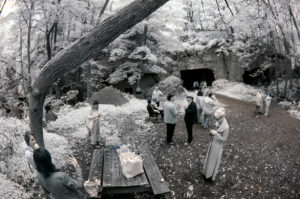 Vast reserves of the type of limestone used in making natural cement were discovered in the vicinity of Rosendale in 1825, the same year that Thomas Cole first visited the Catskill Mountains. The cement produced at Rosendale went into construction of the Delaware and Hudson Canal. The high quality of this fast-setting building material was quickly recognized. Demand for “Rosendale Cement”—as it came to be called—soared. One historian of cement went so far as to say that both New York and Boston were built using mortars prepared from Rosendale cement. It was also used in a wide range of public works projects—including the U.S. Capitol building, the pedestal of the Statue of Liberty, and the Croton Dam, just to name a few. Over the course of the 19th century, dozens of drift mines and cement works popped up across the 32-square-mile district between Rosendale and Kingston. The natural cement business here benefited from cheap fuel, easy access to transportation, and proximity to major urban areas. Production peaked at the end of the 19th century but quickly fell off in the face of competition from the newly-invented—and lower cost—Portland cement. By the end of the second decade of the 20th century, Andrew Snyder’s Century Cement was the only natural cement company still in operation. When it closed down half a century later, so too did the natural cement industry in America. What remains today of that once-booming industry is forest-covered ruins—and the land itself.
Vast reserves of the type of limestone used in making natural cement were discovered in the vicinity of Rosendale in 1825, the same year that Thomas Cole first visited the Catskill Mountains. The cement produced at Rosendale went into construction of the Delaware and Hudson Canal. The high quality of this fast-setting building material was quickly recognized. Demand for “Rosendale Cement”—as it came to be called—soared. One historian of cement went so far as to say that both New York and Boston were built using mortars prepared from Rosendale cement. It was also used in a wide range of public works projects—including the U.S. Capitol building, the pedestal of the Statue of Liberty, and the Croton Dam, just to name a few. Over the course of the 19th century, dozens of drift mines and cement works popped up across the 32-square-mile district between Rosendale and Kingston. The natural cement business here benefited from cheap fuel, easy access to transportation, and proximity to major urban areas. Production peaked at the end of the 19th century but quickly fell off in the face of competition from the newly-invented—and lower cost—Portland cement. By the end of the second decade of the 20th century, Andrew Snyder’s Century Cement was the only natural cement company still in operation. When it closed down half a century later, so too did the natural cement industry in America. What remains today of that once-booming industry is forest-covered ruins—and the land itself.
The Rosendale Cement District has long been a favorite of geologists because of the wide variety of sedimentary rock formations found there. Several of these formations are prone to developing karst topography. “Karst” is a term geologists use to describe landforms that are shaped primarily through the dissolving of water-soluble rocks, such as those limestones used for making natural cement. As described in the Town of Rosendale’s 2007 Natural Resources Inventory: “Karst features include sink holes, caves, springs, and sinking streams, which provide a direct channel between the land surface and the groundwater system. In addition to these features, the Rosendale Karst Aquifer Region contains many old cement industry mines which can also be a direct conduit between the land surface and groundwater system in the same way that karst features are.” In other words, the district is rich in features that the more imaginative might say are “Gateways to the Underworld.” Sink holes, caves, springs, and sinking streams? Orpheus himself—that tutelary ancestor of all poets—would be right at home in a landscape such as this.
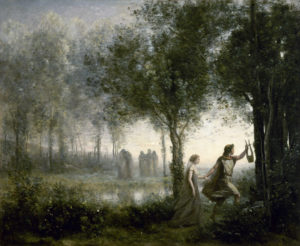 The poet-musician Orpheus was already legendary in ancient Greek times. His music was said to be so enchanting that even the stones fell under his spell. One day his wife, Eurydice, tripped into a pit of vipers and suffered a fatal bite on her heel. When Orpheus found her body, he grieved terribly. The songs of mourning he sang were so powerful that even the gods were moved to sympathy. They advised Orpheus to make a journey to the Underworld and see if he could persuade its ruler—the ever-welcoming Hades—to let him have Eurydice back. So Orpheus descended to the Underworld by way of a cave entrance not unlike that found at the Widow Jane Mine. When the grieving poet played his mournful tunes and sang his mournful verses for the Lord of the Underworld, the god was so moved that he agreed to let Eurydice go. But under one condition: that Orpheus walk in front of her and not turn back until both of them were in the Land of the Living. He did what he was told. The pair were nearly to the cave entrance when Orpheus started getting nervous. He could hear no footsteps behind him, only something like a soft fluttering of ashes. No sooner did he step forth from the cave into the daylight than he turned back to check on his wife. She was there, sure enough, but she had not yet stepped out of the cave. That was the last Orpheus saw of Eurydice in this life. She vanished from sight at once, returning to the realm of Hades. This time there would be no coming back. Orpheus was utterly heartbroken. He wandered about the landscape, far and wide, singing his mournful songs, making all of nature as sad as he was. Accounts of what happened next vary, but all agree that, in the end, the gods took pity on the sad, sad world and removed Orpheus from it. Presumably he joined Eurydice. The two of them ever since have been enjoying the hospitality of Hades.
The poet-musician Orpheus was already legendary in ancient Greek times. His music was said to be so enchanting that even the stones fell under his spell. One day his wife, Eurydice, tripped into a pit of vipers and suffered a fatal bite on her heel. When Orpheus found her body, he grieved terribly. The songs of mourning he sang were so powerful that even the gods were moved to sympathy. They advised Orpheus to make a journey to the Underworld and see if he could persuade its ruler—the ever-welcoming Hades—to let him have Eurydice back. So Orpheus descended to the Underworld by way of a cave entrance not unlike that found at the Widow Jane Mine. When the grieving poet played his mournful tunes and sang his mournful verses for the Lord of the Underworld, the god was so moved that he agreed to let Eurydice go. But under one condition: that Orpheus walk in front of her and not turn back until both of them were in the Land of the Living. He did what he was told. The pair were nearly to the cave entrance when Orpheus started getting nervous. He could hear no footsteps behind him, only something like a soft fluttering of ashes. No sooner did he step forth from the cave into the daylight than he turned back to check on his wife. She was there, sure enough, but she had not yet stepped out of the cave. That was the last Orpheus saw of Eurydice in this life. She vanished from sight at once, returning to the realm of Hades. This time there would be no coming back. Orpheus was utterly heartbroken. He wandered about the landscape, far and wide, singing his mournful songs, making all of nature as sad as he was. Accounts of what happened next vary, but all agree that, in the end, the gods took pity on the sad, sad world and removed Orpheus from it. Presumably he joined Eurydice. The two of them ever since have been enjoying the hospitality of Hades.
Last weekend, the Widow Jane Mine was venue for the 28th Annual Subterranean Poetry Festival. A colorful banner fluttering along the highway said: “Poetry Fest.” I turned in and proceeded up the drive to where a woman was directing traffic. There wasn’t much. She pointed to a narrow lane heading up a steep, forested hill. “Go up there,” she said. “Duffy will take care of you.” I did what I was told. At the top of the hill was a small field. A smiling woman with red hair was standing there. Duffy. She directed me to park at the edge of the field. When I got out of the car I noticed an old graveyard in the woods, the limestone markers all tilting at jaunty angles. I asked Duffy where the poetry festival was happening. She pointed to the ground at her feet. “Down there,” she said, “in the mine, directly below. Descend along that path over there and you’ll come to it soon enough.” I pointed to the tombstones in the woods and asked: “What’s that?” Duffy said, “That’s the old cement workers cemetery.” I thanked her and proceeded down the path to the entrance of the Widow Jane Mine. It was dark inside. The festival was about to begin.
©John P. O’Grady
Originally appeared in The Mountain Eagle on September 14, 2018
